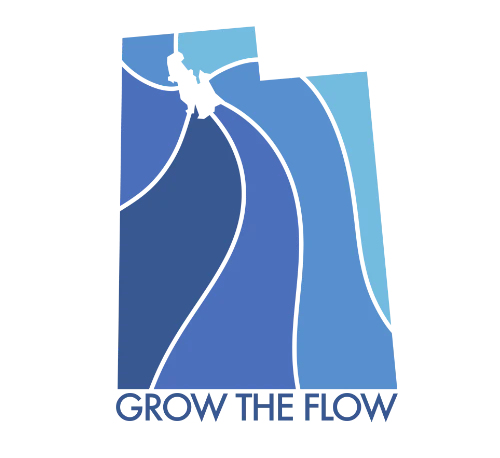Images 1,2,4 by Carmen Valdez, Senior Policy Associate for The Healthy Environment Alliance of Utah (HEAL Utah), taken near Saltair. Image 3 from Jake Dreyfous, Managing Director of Grow the Flow, taken near the mouth of Big Cottonwood Canyon.
Salt Lake City, UT — On April 27th, a dust storm swept across the Salt Lake Valley. The dust event originated from the Great Salt Lake near Saltair and the Kennecott Tailings site. The plume could be seen across the valley, impacting residents in Magna, Tooele County, and Salt Lake City’s west side.
Due to a lack of dust monitors along the Southwest shores of Great Salt Lake, the dust event went unrecorded by the state’s existing air quality network. Strong winds, such as those witnessed across Northern Utah yesterday, pick up harmful contaminants like arsenic, lead, and lithium from the dry sediment, carrying them into Utah’s most densely populated areas.
The recent increase in dust events highlight a growing public health crisis as Great Salt Lake continues to recede. Great Salt Lake dust is linked to increased respiratory illnesses, cardiovascular diseases, developmental defects, and cancer.
The Great Salt Lake’s South Arm elevation currently stands at 4193.4 ft above mean sea level (MSL), meaning the lake is only 40% full by volume, leaving more than 1000 square-miles of lakebed exposed. With below-average runoff and a hot summer expected, the lake will likely recede below 4192 ft. this fall—exceeding the Great Salt Lake Strike Team’s threshold for “Serious Adverse Effects” on the public, the economy, and the lake’s ecology.
“We often think of the impacts of Great Salt Lake dust on our public health as a far-off, distant future. The reality is that dust storms from more than one-thousand square miles of exposed lake bed are infiltrating our communities and impacting the air we breathe today.” said Jake Dreyfous, Managing Director of Grow the Flow. “We must take proactive steps as individuals and as a state to get more water to Great Salt Lake, if we hope to avoid widespread impacts to our health, economy, and ecology in Northern Utah.”
Utah lawmakers recently approved a fraction of the funding to install more dust monitors around Great Salt Lake. Of the $651,000 requested for Great Salt Lake dust monitoring and research, $150,000 was funded—enough to hire a staffer at the Division of Air Quality, but not enough to install additional dust monitors or provide real-time information to impacted communities. The Division of Environmental Quality is actively working to install more monitors with existing funds.
“We don’t know what we don’t measure,” Utah Division of Air Quality Director Bryce Bird told lawmakers during a recent hearing. Until September 2024, Great Salt Lake had just four PM10 dust monitors—none within 10 miles of the shoreline. That number has recently increased to six, leaving large gaps in the state’s ability to track toxic dust events.
“We’re deeply concerned about what the shrinking Great Salt Lake means for our families and communities. More frequent and toxic dust storms, like the one on Sunday, April 27th, are carrying dangerous pollutants from the lakebed and nearby tailings piles, putting our health at serious risk.” said Carmen Valdez, Senior Policy Associate for The Healthy Environment Alliance of Utah (HEAL Utah). “Everyone deserves clean air and a safe future, and we’re committed to fighting for solutions that protect both.”
For more information visit GrowTheFlowUtah.org.




